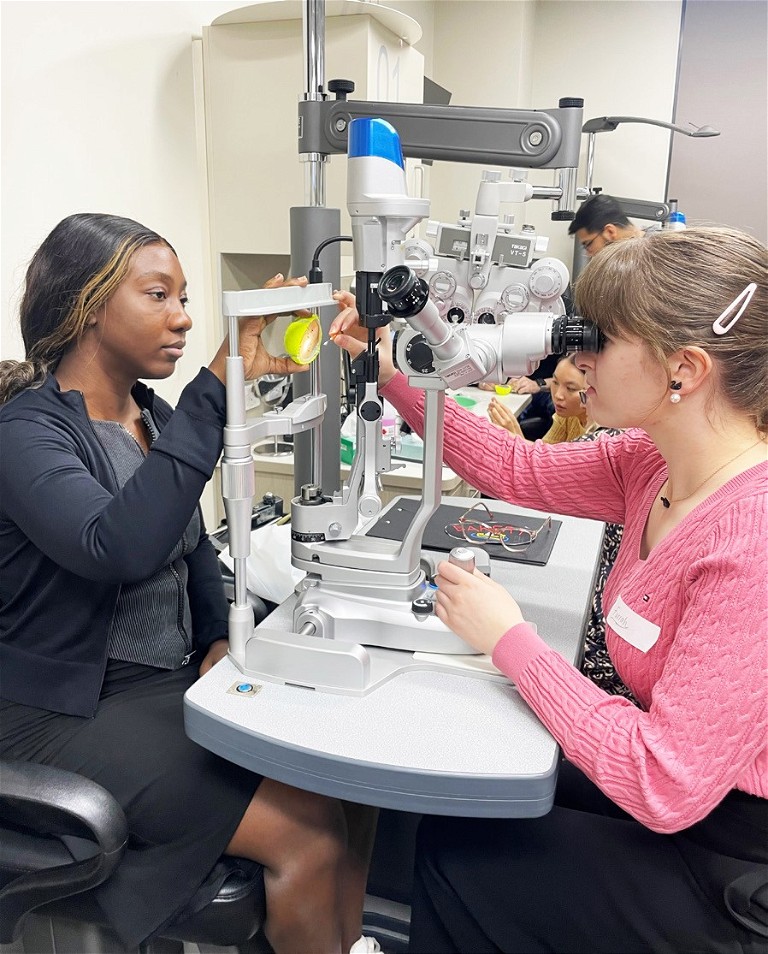minews
Early Career Development: Nexus, YO Collaborate
Ophthalmologists from Nexus Hospital Group are collaborating with Young Optometrists (YO) to bring hands-on training to recent optometry graduates practising in regional New South Wales.
To date, Jason Talbot, Business Development Director at Nexus, and Jack Gordon, a committee member from Young Optometrists in NSW, have organised training sessions on foreign body removal and laser assisted cataract surgery for optometrists in Canberra and Newcastle. Plans to deliver more training programs are progressing.
“First, we did foreign body removal training with YO members in Sydney and then we took that framework and translated it to Newcastle and Canberra,” Mr Talbot explained.
LEARNING ALONG THE WAY
To ensure the experience was as authentic as possible, the pair managed to source agar eyes for the foreign body removal training.
“Initially we sourced cows’ eyes from a butcher, but delivery was seven days late, so the eyes weren’t great,” Mr Gordon said. “Neither we nor the hospital were happy with that, but then we found out how to make eyes from agar.
“We cut paperclips into tiny pieces and embedded them into the eyes, which caused rust rings to form in the agar, a surprising benefit for the training. It wasn’t really something we knew would happen, but it was quite helpful because that’s what happens in the eye (with a foreign metal object).”
Mr Talbot said the hands-on experience gained by the optometrists during the foreign body removal wet labs is valuable as optometrists are often the first practitioner a patient turns to in a regional area.
“If someone comes in with a piece of iron in their eye, you have to work with what you’re comfortable with... So long as the optometrist is practising within their capabilities, it is useful for the patient to be seen… if the patient were to present later on (because they weren’t able to see an ophthalmologist), you can get a bit of a rust ring or a bit of an infiltrate developing, which means the scar can potentially be worse.”
BREAKING BOUNDARIES
The two-hour events attracted 20–30 local attendees and, in addition to the benefit of providing hands-on experience, facilitated a networking opportunity that the young optometrists don’t often get.
“The workshops definitely give you confidence in what you are doing, but you also have an opportunity to chat to the ophthalmologist who is likely to be your major contact for the region,” said Mr Gordon.
“Whenever we see surgeons, there’s generally a level of nervousness that exists. But if we can break down those barriers to allow much greater relationship between early career optometrists and ophthalmologists, then it’s going to be a better relationship and outcome for the patient ultimately.
“So (at the laser assisted cataract surgery workshop in Newcastle) I was able to ask Dr Ravi Singh about a couple of different patients, and although they were unrelated to the event, it was actually quite nice, and it made me feel more confident about picking up the phone to him in the future.
“In fact, he offered all the optometrists a direct line via WhatsApp chat.”
Mr Gordon said that direct line is particularly helpful for recent graduates who might find themselves with patients who don’t necessarily listen to their advice.
“It is a little bit different in the major cities where you can refer patients on to an ophthalmologist immediately. But in the rural areas, having a direct line to an ophthalmologist is definitely something that really, really helps, especially when you’re newly graduated.”
INVESTING IN THE FUTURE
Mr Talbot said further strengthening relationships between optometrists and ophthalmologists is high on the agenda for Nexus Hospitals.
“We’re always looking to expand our offerings for our ophthalmologists, we’re interested in investing in new equipment, and allowing them to do trials on anything that might be coming up.
“But in terms of what we can do with young optometrists, this is just an absolutely fantastic collaboration that we’ve got going. It is investing in the future and starting those relationships early between ophthalmologists and optometrists so that they can grow together: that’s what we’re all about and it’s what we’re trying to achieve.”
